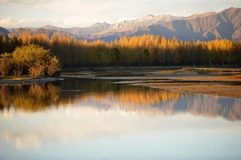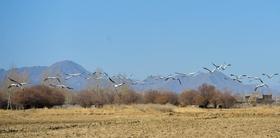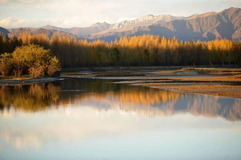Tibet invests billions in environmental protection
On Feb. 22nd Tibet Autonomous Region Environmental Protection Department revealed that, up to the end of the 12th Five Year Period Tibet had invested a total of 18.8 billion yuan in ecological compensation.
The purpose of China’s ecological compensation system is to protect the ecological environment and promote harmonious development between man and nature. Also, according to the ecosystem services value, ecological protection costs and opportunity cost of development, use government and market measures to regulate the public system responsible for those with interests in ecological protection.
This system was first implemented in Tibet in 2004. Currently, the scope of compensation includes grasslands, forests, key ecological function areas, wetlands and others. The most direct effect of thesystem is that the once rarely seen snow leopard now frequently appears and numbers of the once endangered Tibetan antelope are increasing year on year in the eyes of common people.
Norgyal, Director of the Tibet Autonomous Region Environmental Protection Department, said that Tibet has already established 47 nature reserves and was the first in China to build ecological protection areas at the source of the Yangtze and Yellow Rivers. Tibet has established 22 ecological protection areas and water quality at 75 of its lakes is now in line with the national master plan for lake ecological protection.
Norgyal added that every year Tibet puts forward 100 million yuan to carry out checks on government environmental protection work in 74 counties (districts) across the region and to establish an incentive system rewarding environmental protection with transfer payments. “I would rather see slow development than sacrifice the ecological environment”.
Tibet is an important ecological security barrier for China and affects the ecological security of the whole country. According to reports, over the past five years 7.12 billion has been invested in establishing Tibet’s ecological security barrier. The plan has executed ten projects from three main categories including protection, development and support guarantee.
“At present, the atmospheric and water environment in Tibet remain good. Air quality is good in all weather and water quality in lakes and rivers maintains second category status or above,” said Norgyal.
Norgyal explained that, by the end of the 13th Five-Year Plan Tibet will have started building a framework where economic development and resource environment are in harmony, thus completing the objective of creating a beautiful ecological environment in a moderately prosperous society. Tibet also hopes to gradually create a society that respects nature, is in harmony with nature and protects nature.
Your Comment
Name E-mailRelated News
-
;
-
-

-
Long-term task to protect ecology on highest plateau
With an average altitude of about 4,000 meters, the Qinghai-Tibet Plateau in southwestern China is a unique geographical region.
-
-
-

-
Long-term task to protect ecology on highest plateau
With an average altitude of about 4,000 meters, the Qinghai-Tibet Plateau in southwestern China is a unique geographical region.
-
-
-

-
Long-term task to protect ecology on highest plateau
With an average altitude of about 4,000 meters, the Qinghai-Tibet Plateau in southwestern China is a unique geographical region.
-
-
-

-
Some Tibetan antelopes do not migrate due to improved ecology: off
Now is the birthing migration season for Tibetan antelope. But research has found that some Tibetan antelopes now choose to remain where they are for labor.
-
Based in Lhasa, Tibet Vista is a Tibet travel agency that specialized in Tibet permit, and Tibet tours for both private and group travelers at a local price!
•4 Days Lhasa City Group Tour from USD 460 •8 Days Everest Base Camp Group Tour from USD 850 •15 Days Mt.Kailash Group Tour from USD 1780 •2016 Tibet Train Tours from Beijing, Shanghai, Chengdu, Xining,etc










